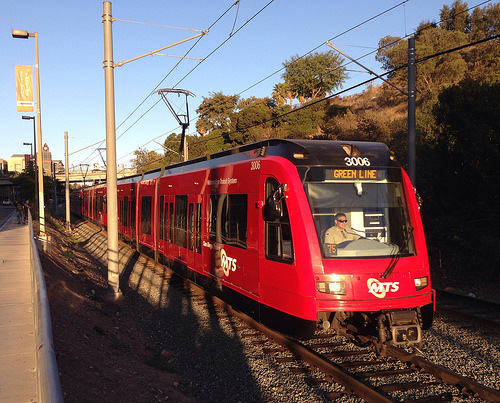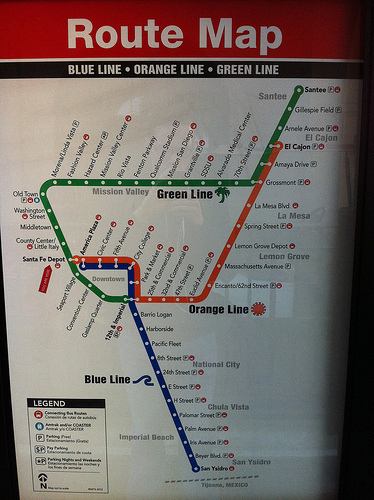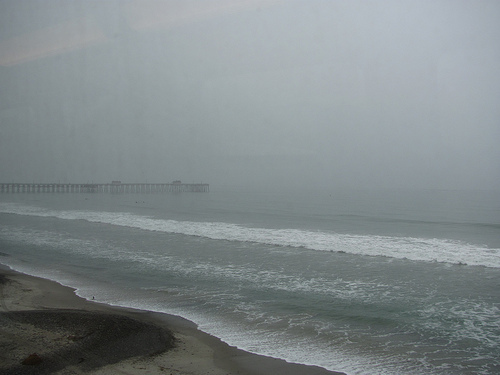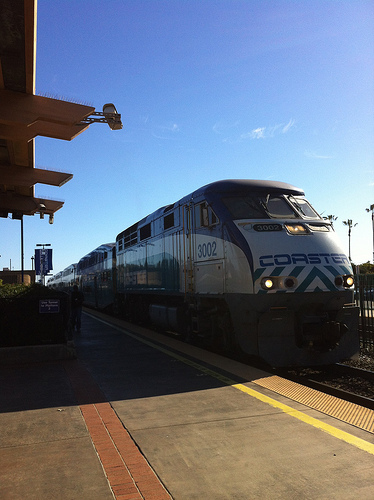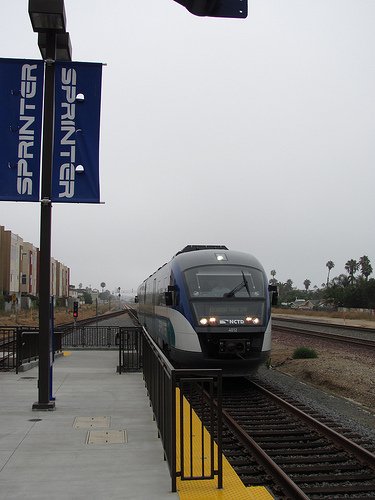San Diego’s Trolley is just the beginning of an extensive countywide rail network
Continuing our look at transit systems outside the Washington region, San Diego county has a light and commuter rail network that stretches 117 miles across Southern California.
The 53.5-mile San Diego Trolley, and its distinctive red cars are the flagship of San Diego’s network. The light rail system carries an average of 124,000 passengers every weekday, the fourth most among American light rail systems. It also connects many of region’s major destinations including downtown, at least one of the naval bases, and the US-Mexico border crossing at San Ysidro.
The Trolley has three lines, and the segment of the Blue Line between downtown San Diego and the Mexican border that opened in 1981 makes it the oldest modern light rail in the US. The first segment of the Orange Line did not open until five years later in 1986, and the most recent extension came along in 2005.
While it covers much of urban San Diego county, the Trolley has its limits. You can’t ride to the beach, Hillcrest (a dense urban neighborhood), or popular tourist sites like Balboa Park and the zoo. You also can’t take it to University City, a major education and employment center north of downtown, though that will change when the 10.9-mile Mid-Coast Corridor extension opens in 2019.
Two commuter rail lines stretch San Diego’s network
At the Santa Fe Depot and Old Town stations, the Trolley shares a platform with the county’s Coaster commuter rail line.

Amtrak and Coaster platforms are on the left and Trolley platforms on the right at San Diego’s Santa Fe Deport.
The 41-mile line hugs the Pacific coast from downtown San Diego to Oceanside, offering some impressive ocean vistas along the way.
At its northern terminal, the Coaster connects to the county’s hybrid light commuter rail line the Sprinter, as well as the Los Angeles region’s Metrolink commuter rail system and Amtrak.
The Sprinter runs between Oceanside and inland Escondido along a 22-mile suburban highway corridor. The line has faced criticism for its low ridership and limited frequency. On weekdays it runs every 30 minutes (even less often on weekends and evenings) and averages about 8,000 riders, despite initial targets of 11,000.
Criticizing the Sprinter for not being as successful as light rail, though, is a little unfair because it’s not light rail. Many commuter rail lines only provide good service at rush hour, and thus often have relatively low ridership compared to all-day light rail. As a hybrid, Sprinter strikes a balance between the two, providing better all-day service than commuter rail like Virginia’s VRE, but not as good as light rail.
The San Diego Association of Governments (SANDAG), the area’s metropolitan planning organization, both plans and funds transit in San Diego. Funded by a half-cent county wide sales tax, it decides what gets built where and when, leading to transit investments being spread across the region.
The San Diego Metropolitan Transit System (MTS) in actually operates the Tolley, and the North County Transit District (NCTD) runs both the Coaster and the Sprinter.
San Diego’s centralized planning and funding structure is certainly different from ours. The National Capital Region Transportation Planning Board handles our region’s long-term transportation plans, but it is up to the individual jurisdictions to actual design, fund, and build those projects. This means varying priorities, and projects whose benefits aren’t immediately apparent across the region as a whole.
Unfortunately, a centralized planning organization with the power of the purse is unlikely in the Washington region because there are too many governments in play. But San Diego’s system is an example of what such an organization can do.
For more on transit developments in other cities, check out GGW’s coverage of San Francisco BART’s new Oakland Airport connector and Dallas’ DART light rail system.

